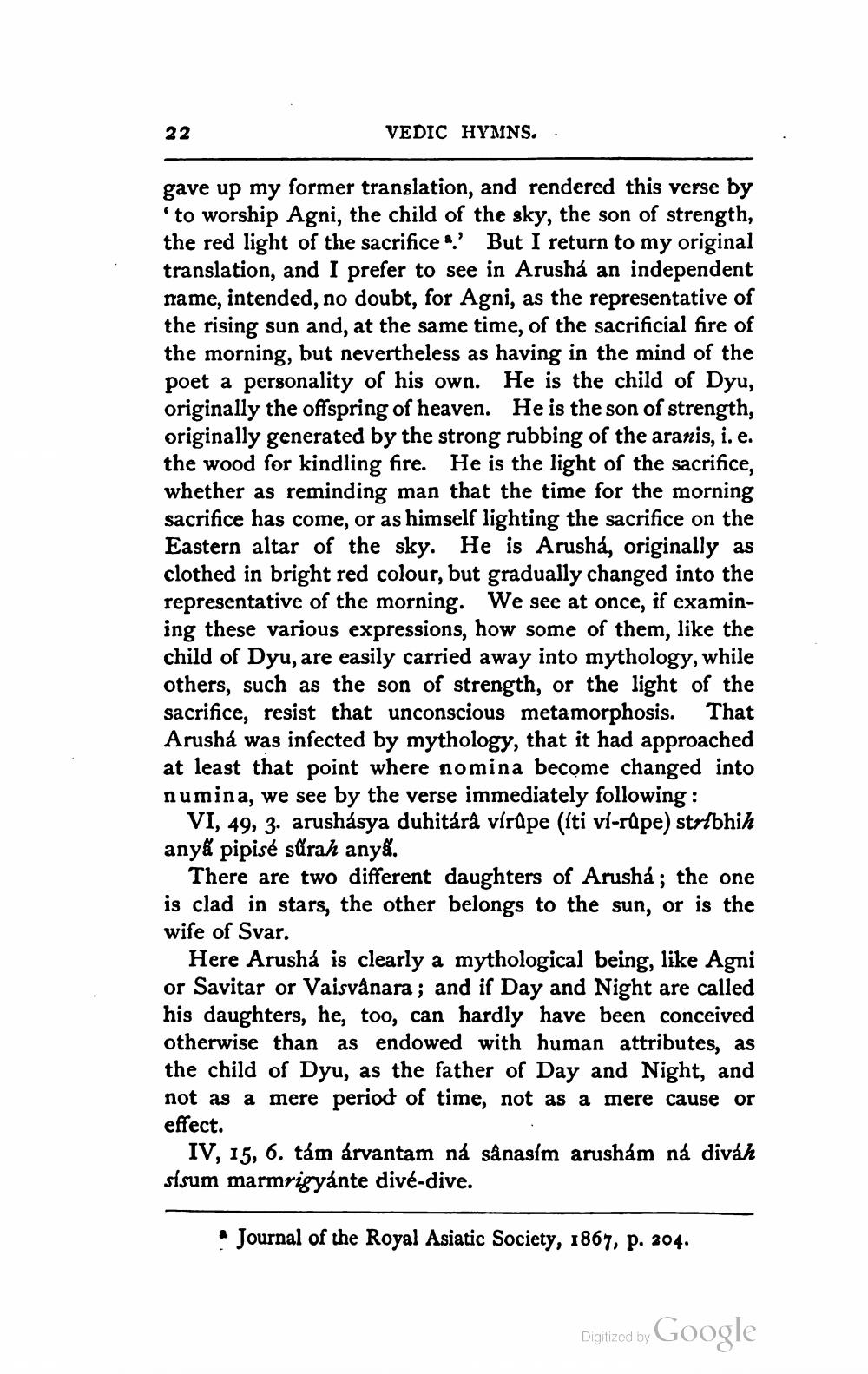________________
22
VEDIC HYMNS..
-
gave up my former translation, and rendered this verse by 'to worship Agni, the child of the sky, the son of strength, the red light of the sacrifice .' But I return to my original translation, and I prefer to see in Arusha an independent name, intended, no doubt, for Agni, as the representative of the rising sun and, at the same time, of the sacrificial fire of the morning, but nevertheless as having in the mind of the poet a personality of his own. He is the child of Dyu, originally the offspring of heaven. He is the son of strength, originally generated by the strong rubbing of the aranis, i.e. the wood for kindling fire. He is the light of the sacrifice, whether as reminding man that the time for the morning sacrifice has come, or as himself lighting the sacrifice on the Eastern altar of the sky. He is Arusha, originally as clothed in bright red colour, but gradually changed into the representative of the morning. We see at once, if examining these various expressions, how some of them, like the child of Dyu, are easily carried away into mythology, while others, such as the son of strength, or the light of the sacrifice, resist that unconscious metamorphosis. That Arusha was infected by mythology, that it had approached at least that point where nomina become changed into numina, we see by the verse immediately following:
VI, 49, 3. arushásya duhitara vírūpe (iti vi-rūpe) stríbhih anyá pipisé surah any.
There are two different daughters of Arusha; the one is clad in stars, the other belongs to the sun, or is the wife of Svar.
Here Arusha is clearly a mythological being, like Agni or Savitar or Vaisvanara; and if Day and Night are called his daughters, he, too, can hardly have been conceived otherwise than as endowed with human attributes, as the child of Dyu, as the father of Day and Night, and not as a mere period of time, not as a mere cause or effect.
IV, 15, 6. tám árvantam na sånaslm arushám ná diváh sísum marmrigyante divé-dive.
• Journal of the Royal Asiatic Society, 1867, p. 204.
Digized by Google




